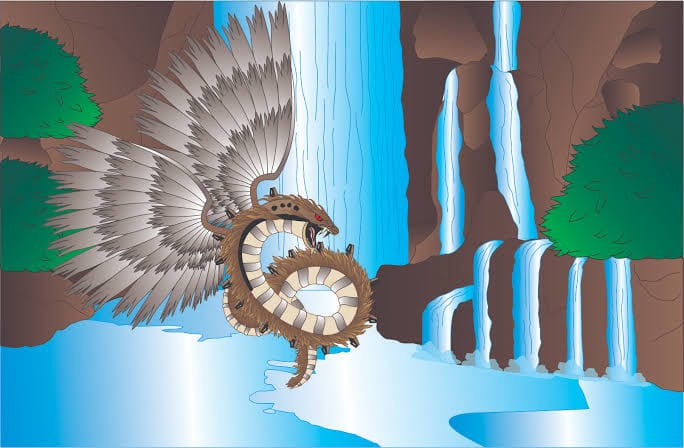Hanal Pixan: A Celebration of Life and Death
El Hanal Pixán, que en maya significa “comida de las ánimas”, es una de las festividades más emblemáticas y profundas de la Península de Yucatán. Esta celebración, que tiene lugar del 31 de octubre al 2 de noviembre, es una oportunidad única para sumergirse en la rica cultura y tradiciones de los mayas, y no hay mejor lugar para vivir esta experiencia que en Valladolid, un pueblo mágico lleno de historia y encanto. Orígenes del Hanal Pixan El Hanal Pixan tiene sus raíces en las antiguas prácticas mayas, donde se creía que las almas de los difuntos regresaban al mundo de los vivos durante estos días para disfrutar de los alimentos y ofrendas preparadas por sus seres queridos. Con la llegada de los españoles, esta tradición se fusionó con las festividades católicas del Día de Todos los Santos y el Día de los Fieles Difuntos, creando una celebración única que combina elementos prehispánicos y cristianos. Los mayas creían que la muerte no era el final, sino una transición a otro plano de existencia. Durante el Hanal Pixán, las almas de los difuntos regresan para convivir con sus familiares y disfrutar de los manjares que se les ofrecen. Esta creencia se refleja en la elaboración de altares y ofrendas, que son una muestra de amor y respeto hacia los que ya no están físicamente presentes. Preparativos y Altares Los preparativos para el Hanal Pixan comienzan días antes del 31 de octubre. Las familias yucatecas limpian y decoran las tumbas de sus seres queridos con flores de cempasúchil, velas y cruces. En las casas, se montan altares con manteles bordados, fotografías de los difuntos, y una variedad de ofrendas que incluyen alimentos tradicionales como el mucbipollo, tamales, frutas, dulces y bebidas. Cada elemento del altar tiene un significado especial, desde las velas que guían a las almas hasta el incienso que purifica el ambiente. El altar es un elemento central en la celebración del Hanal Pixán. Se compone de varios niveles que representan los diferentes planos de existencia. En el nivel superior, se colocan imágenes de santos y cruces, mientras que en los niveles inferiores se disponen las ofrendas para los difuntos. Entre los alimentos más comunes se encuentran el mucbipollo, un tamal grande relleno de carne y cocido bajo tierra, y el atole nuevo, una bebida a base de maíz. También se incluyen frutas, dulces y bebidas alcohólicas, así como objetos personales que eran queridos por los difuntos Festividades en Valladolid Valladolid, con su encanto colonial y su vibrante comunidad, es el lugar perfecto para vivir el Hanal Pixán. Durante estos días, la ciudad se llena de color y vida con diversas actividades culturales y religiosas. Entre las festividades más destacadas se encuentran: -Desfile de Catrinas y Catrines: Un desfile lleno de color y creatividad donde los participantes se visten como las icónicas figuras del Día de Muertos, con trajes elaborados y maquillaje detallado. Este desfile recorre las principales calles de Valladolid, creando un ambiente festivo y lleno de vida. Las catrinas y catrines, con sus trajes elegantes y sus rostros pintados, representan la dualidad de la vida y la muerte, y son un símbolo de la celebración. –Demostración de Altares: En diferentes puntos de la ciudad, se pueden admirar altares elaborados por las familias locales, cada uno con su propio estilo y significado. Estos altares son una muestra de la devoción y el respeto hacia los difuntos, y cada uno cuenta una historia única. Los visitantes pueden recorrer los altares, aprender sobre las tradiciones yucatecas y participar en ceremonias y rituales. –Danzas Folclóricas y Música: Grupos de danza y música tradicional se presentan en las plazas y parques, ofreciendo un espectáculo lleno de energía y tradición. Las danzas folclóricas, con sus coloridos trajes y sus movimientos rítmicos, son una celebración de la vida y la cultura maya. La música, que incluye marimbas, guitarras y tambores, crea un ambiente festivo y alegre que invita a todos a participar. –Concursos de Catrinas y Tumbas: Concursos donde se premia la creatividad y el respeto a las tradiciones en la elaboración de catrinas y tumbas alternativas. Estos concursos son una oportunidad para que los participantes muestren su talento y su amor por las tradiciones. Las catrinas y tumbas se decoran con flores, velas y otros elementos, creando obras de arte que son tanto hermosas como conmovedoras. Invitacion a compartir la tradicion Visitar Valladolid durante el Hanal Pixan es una experiencia que va más allá del turismo; es una oportunidad para conectar con la historia y las tradiciones de una cultura milenaria. Al participar en estas festividades, no solo estarás honrando a los difuntos junto con la comunidad local, sino que también estarás apoyando la preservación de estas valiosas tradiciones. Visita el unico Cenote & Museo Reserva aqui Premio nacional Te invitamos a planificar tu visita a Valladolid durante el Hanal Pixán. Disfruta de la hospitalidad yucateca, deléitate con la gastronomía local y sumérgete en una celebración que honra la vida y la muerte de una manera única y conmovedora. Pasea por las calles empedradas de Valladolid, admira la arquitectura colonial y descubre los secretos de esta ciudad mágica. No te pierdas la oportunidad de vivir esta experiencia inolvidable y de llevar contigo un pedacito de la rica cultura maya. ¡Te esperamos en Valladolid para celebrar el Hanal Pixán y compartir juntos esta hermosa tradición!




